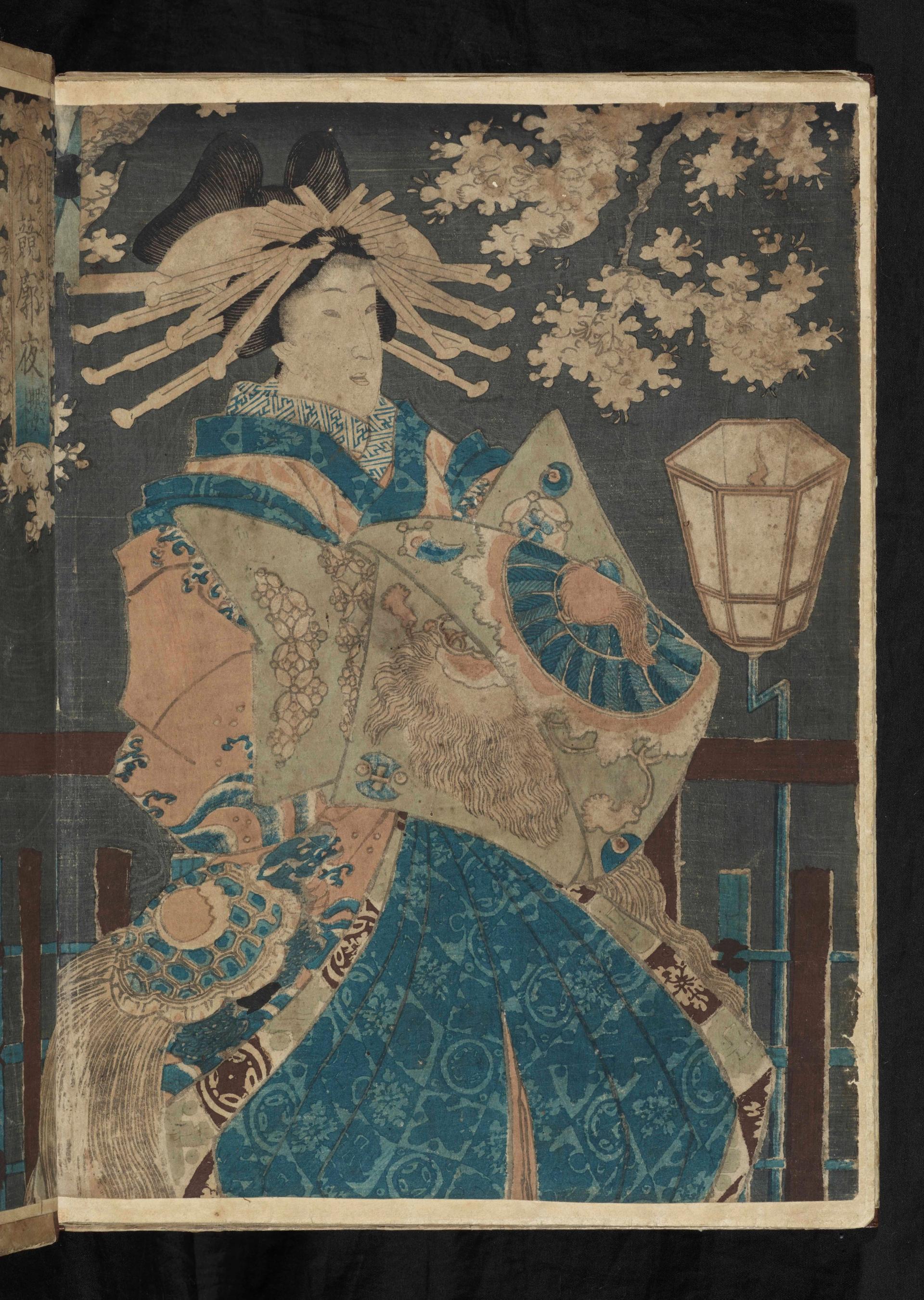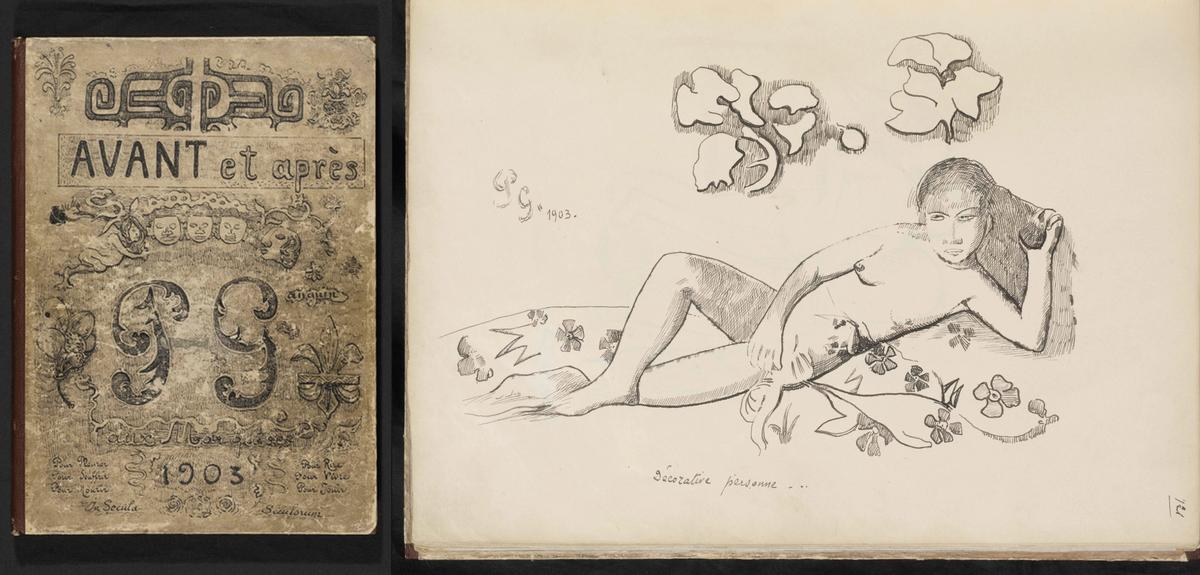A Paul Gauguin manuscript which has never been exhibited has just been acquired by the Courtauld Gallery. Avant et Après (Before and After), a book-length work, was completed by the artist on the remote Marquesan island of Hiva Ova in February 1903, just two months before his death at the age of 54.
The manuscript, illustrated with nearly 30 original images, has been allocated to the Courtauld under the Acceptance in Lieu scheme, satisfying £6.5m of inheritance tax. It is one of the greatest artist manuscripts to be acquired by a UK public collection since the Second World War.
In his Polynesian hut Gauguin wrote Avant et Après into a large notebook (almost A4 dimensions), which was probably rebound in around 1918. Along with 213 pages of neatly written text there are eight full-page and two in-text drawings and 19 traced monotype prints.

The front fly leaf with Japanese print in Paul Gauguin's manuscript Avant et Après © The Courtauld
The striking cover has the words in French: “To Cry, to Suffer, to Die/To Laugh, to Live, to Enjoy”. Pasted on the inside covers are three 1850s Japanese prints by Utagawa Kunisada and on the back a print after Dürer’s Knight, Death and Devil (1513), evidence of Gauguin’s eclectic artistic interests.
Ketty Gottardo, the Courtauld’s curator of drawings, describes Avant et Après as “part-memoir and part manifesto”. It includes revealing anecdotes and opinions about Degas, Pissarro, Signac and Cézanne.
Most importantly, Gauguin deals with the nine weeks that he spent working with Van Gogh in the Yellow House in Arles, a collaboration which was brought to an abrupt end by Van Gogh’s mutilation of his ear. Gauguin’s intention behind the writing seems to have been to justify his own actions and blame Van Gogh for the disaster.
In Avant et Après Gauguin also makes caustic comments about Parisian art critics who failed to appreciate his talent and the overbearing behaviour of French colonial and church authorities in Polynesia.

A page from Paul Gauguin's Avant et Après © The Courtauld
Gauguin had hoped that the manuscript would be published in France and just before his death he sent it to his Belgian critic friend André Fontainas, who was based in Paris. Not surprisingly, there was little appetite to publish the text, since Gauguin had not yet become a star. In 1907 Fontainas gave the manuscript to Mette Gauguin, the artist’s estranged former wife.
In 1914 Mette sold Avant et Après to the German publisher Kurt Wolff, who four years later produced a small-edition facsimile. That year Wolff sold the manuscript to his friend Erik-Ernst Schwabach, a wealthy publisher from a banking family, who translated the text into German in 1920.
It is now possible to recount the untold story of the manuscript’s 20th-century adventures. In the mid-1920s Schwabach sold Avant et Après to Erich Goeritz, a textile factory owner. In 1934 Goeritz fled Germany because of the Nazis and came to Britain, where he took up citizenship. Goeritz had by then amassed a fine collection of the Impressionists and the German Expressionists (particularly Lovis Corinth) and later donated a few works to the Tate and British Museum.

It is believed that the manuscript contains a self-portrait © The Courtauld
After Goeritz’s death in 1955 it emerged that Avant et Après had somehow ended up in the hands of the New York dealer John Fleming of the Rosenbach gallery. At this point it was valued at $85,000. After legal action the manuscript was returned to his children and eventually to a grandchild, who recently offered it in lieu of inheritance tax.
Although Avant et Après has been available in facsimile and in transcriptions, no art historians have seen the original manuscript in at least 50 years. However, as Gottardo shows us, the original reveals more about the manuscript. In particular, it is now possible to determine which of the images are drawings and which are monotype prints (transfer drawings). A drawing with a dog, hidden on the back of one of the monotypes, has also been discovered.
Gauguin once described his drawings as “my private letters, my secrets”, so these works provide an unusual insight into his artistic process. One of the sketches could represent a self-portrait.
The manuscript of Avant et Après is to go on display next spring, when the Courtauld Gallery reopens after major building work.
• Read more on the Gauguin's revelations about Van Gogh in the manuscript here.


